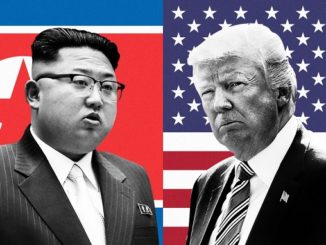
U.S. and Venezuelan oil exports to India have surged as a result of sanctions against Iran. By targeting Iran’s lucrative oil sector, sanctions have impaired the longstanding energy trade between New Delhi and Tehran, forcing India to diversify its energy suppliers, Forbes writes.
Iran has long played a role in ensuring India’s energy security. India’s rising energy consumption coupled with its falling domestic oil output has preserved its status as one of the world’s largest importers of oil. This year alone, India imported more than 84% of its crude from abroad, an all-time high. The South Asian giant is the second largest purchaser of Iranian crude after China. India imported 27.2 million tons of oil worth $11.1 billion between 2017-2018, and Iran historically accounted for nearly 17% of India’s total crude imports.
For the past several years, India-Iran oil trade has fluctuated significantly based upon the state of prevailing U.S.-Iranian tensions. The fluctuations follow a predictable pattern. Periods of acute tension between the U.S. and Iran lead to sharp drops in India-Iran oil trade as a result of stringent American secondary, or extraterritorial, sanctions. Easing tensions lead to an easing of sanctions and a commensurate increase in bilateral energy trade between India and Iran. Following the consummation of the multilateral Iran deal, formally known as the Joint Comprehensive Plan of Action (JCPOA) in July 2015, for example, Iranian crude imports to India surged more than 110% after certain U.S. sanctions on Iran were lifted.
But the Trump Administration’s withdrawal from the Iran deal in May 2018 and the renewal of sanctions ultimately forced India to again significantly curb its imports of Iranian crude. India found itself in a familiar position: either end the Iranian imports or jeopardize its access to the American financial system as a consequence of U.S. secondary sanctions, Forbes adds.
In an effort to help stabilize global oil markets and provide some of its closest partners and allies an opportunity to secure alternative supplies, Washington issued temporary sanctions waivers to several of Iran’s biggest purchasers of crude oil, including South Korea, Japan and India. With the waiver in place, New Delhi ramped up its purchases of Iranian crude, importing approximately 479,500 barrels per day (bpd) from Iran during the fiscal year ending in March 2019. The figure represented a 5% increase compared to the same period last year.
The Trump Administration’s decision to permanently end all sanction waivers earlier this year, however, once again compelled India to not just slash Iranian crude imports, but to cease them all together. It has also forced India to search for alternative energy sources.
Toward this end, the U.S. has emerged as one of India’s top suppliers of crude oil in recent months. In fact, exports of American crude to India have outpaced the country’s other traditional sources, particularly in the Middle East. Industry data indicates that India bought roughly 184,000 bpd of oil from the U.S. between November 2018 and May 2019, compared with approximately 40,000 bpd in the same period a year earlier.




Be the first to comment